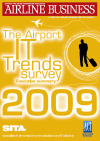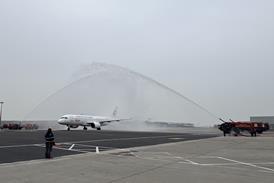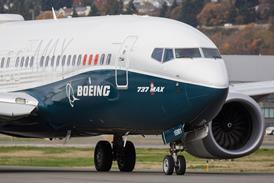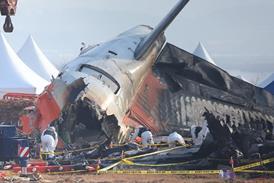This year's Airport IT Trends Survey, commissioned by Airline Business in partnership with Airports Council International and SITA, underlines the relentless growth of passenger self-service. At check-in self-service is used by over half of all travellers, making it the primary means for passenger processing at 29% of airports -up from 14% last year. And this figure looks set to reach 44% by the end of next year, exceeding 2008 survey respondents' expectations of 32%, and will grow to over three quarters of airports within three years.
 |
|---|
Meanwhile, kiosk-based bag tag printing has been rolled out by 17% of airports and this figure is likely to grow to 51% by the end of 2012. And while only a small number of airports, 12%, offer common bag drop locations and just 8% have automated boarding gates, this is forecast to reach 48% and 42% respectively within the three-year window.
This situation is creating a new mindset about how the airport is used. Sweden's Stockholm Arlanda Airport is even keen to move check-in away from the airport itself.
Non-airport Check-in
Stockholm Arlanda Airport chief financial officer Jan Egenäs says: "Ideally I wouldn't like people to use the airport as a huge check-in area. If we have bag drops, that's probably the best solution and you can check in at home before you leave, that's fine." One step towards this vision has been the installation of self-service check-in kiosks at Stockholm's central railway station, which SAS passengers have been using since September. "There's quite a few airlines knocking at the door to get in there because they can see their customers are attracted by checking in at the train station," saysEgenäs.
| WATCH THE WEBINAR |
|---|
| There will a webinar discussing some of the findings and issues raised in this year's survey, moderated by Airline Business editor Mark Pilling and featuring John Newsome, director of IT at the Greater Orlando Aviation Authority, and Catherine Mayer, vice-president airport solutions at SITA. It will take place on 9 December 15:00 GMT. For more information click here. |
Air Canada and WestJet passengers can print bag tags at all its 126 common-use self-service kiosks, with 60,000 bag tags printed and self-tagged per month. Bag tags and boarding passes are reconciled by an agent, who accepts the bags for transportation. "We have a pilot starting very shortly with self-service automated bag drop where the airline staff will still be there, but managing three or four bag drops at the same time," says Aéroports de Montréaldirector for business development Antoine Rostworowski.
Self-service will inevitably lead to airport layout changes. But, for restrictedMontreal-Trudeau, space for terminal expansion has driven the development of a self-service solution for baggage. Ron Hiscox, who consulted on the project, explains: "The way it has been built and calibrated, if everyone had to go to the desk and queue up, it would be too small for the number of passengers it has. We are hoping over the near term the proportion on the self-service side will increase because it will make it smoother."
In the face of self-service, airports should also expect passenger flows changes, so theyare turning to technology to help monitor waiting times in the terminal. The survey reveals a quarter of all airports are already monitoring passenger wait times, but this is set to increase to 53% over the next three years. Video analytics is the most popular tool. It is used by 31% of the early starters and is picked as the preferred choice for 60% of airports with projects in the making.
|
|---|
However, future developments could also see passengers looking for greater journey predictability. John Payne at San Francisco International Airport predicts: "Through a number of different data sources - Google, transit, public agencies - providing information over the Internet, there will be a move over the next couple of years to provide passengers with predictability that will allow you, with a high degree of accuracy, to decide whether to take private or public transit and how long it will take you to get to your aircraft seat."
The 2009 Airport IT Trends Survey will be available to buy here from 9 December
Source: Airline Business























